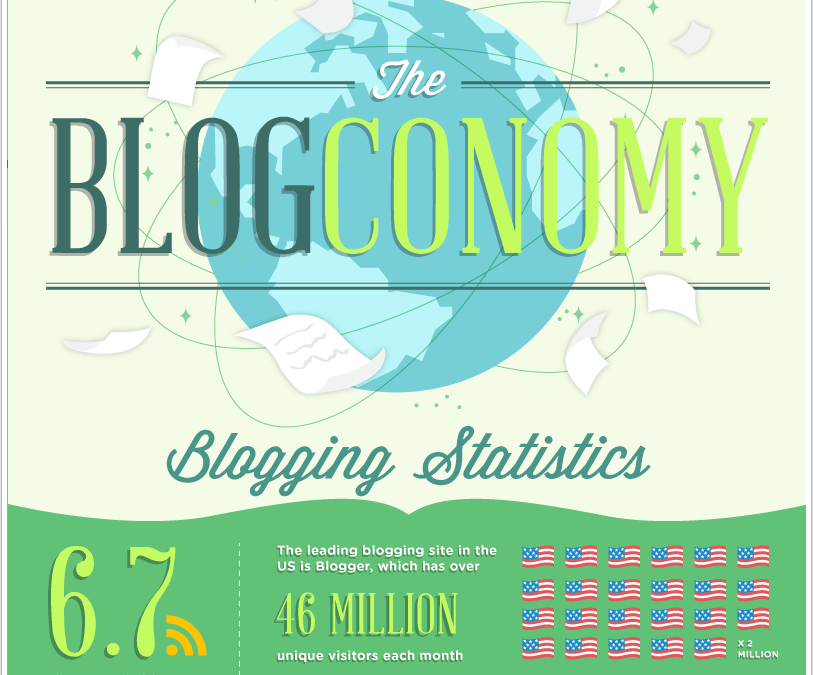
by Francois Muscat | May 25, 2016 | Blogging, SEO
SEO, or Search Engine Optimisation, is an essential part of any bloggers arsenal in the quest to increase visibility. By using search terms or keywords in your content that are likely to be used in searches by people, your rankings on the search engine results will be better. Blogs are naturally suited to rank well in searches, as a result of their topics and the frequency they appear, but there are a few ways to enhance the way the blog is indexed and ranked, which is where SEO comes in.
It goes without saying that the content of the blog needs to be great – quality content that entertains or solves a problem is more likely to be shared. While you can get quite swept away by trying to write content that is crammed full of keywords, it’s not everything. You should publish content you believe in and feel good about posting. You need to think about the kind of language your users are likely to type into a search and create your piece with phrases that correspond. When thinking about which keywords to use, you need to brainstorm the phrases and words you think people will use, as well as writing the kind of content that will reach a large and relevant audience. Using online tools like Keyword Tool can help you refine your keyword compilation into a set that are targeted, useful and likely to increase traffic.
The title you use is another biggie – Google pays a lot of attention to titles. If your blog is long, use subheadings to make the structure of your article clearer. Try to include the keywords in your title, as well as in subheadings, but not every subheading – it will start to make your blog unreadable.
The length of your blog is another point – Google prefers long articles, but if they ramble on and on, you’re likely to lose readers. A minimum should be 300 words, with a maximum of around 700 words. In a 300-word article, you should aim to use your search terms three to six times, if possible.
There are a number of plugins you can use to assist you in writing SEO-friendly blogs, which will measure many aspects of your writing and provide you a number of suggestions to improve its searchability. As you use a plugin more and more, you’re likely to start writing in a way that ticks all the boxes and increases your page rankings consistently.
Lastly, links are important. Adding links to relevant content within your posts help search engines get a clearer idea of what your topic is about. Linking to other sites can be the start of a relationship too. If you have been blogging a while, you should a fair amount of your own content that you could interlink, which can keep readers on your website longer.
If you need help with your SEO or need it explaining in simple terms, contact us. Experienced digital marketers, we know everything about Search, from Local search to Paid search and much more. We can help you write your blogs too!

by Marianna Muscat | May 3, 2016 | Blogging, Content Marketing
As we move further into the 21st century, organisations of all sizes are increasingly appreciating that having a presence in the digital community at large is a must in order to expand and grow.
Business owners often ask, “Ok, so I have a Facebook Page for my business. Why would I spend so much of my precious time writing a blog?”
80% of business decision makers prefer to get information in a series of articles versus an advertisement.
61% of consumers say they feel better about a company that delivers custom content and are also more likely to buy from that company.
Brands that create15 blog posts per month average 1,200 new leads per month.
This is why it is blogging good business sense:
- A blog gives your company a voice, a personality, a character.
Sharing your unique message makes you “real” to your customers, your prospects, and even your suppliers.
- Connecting with your customers and prospects has never been easier.
Have upcoming specials or a launch to advertise? Need to explain your new system or process without sounding too bossy? Want to introduce your team to the world? A business blog is your answer when it comes to connecting and nurturing your business relationships.
- Business decision-making is a breeze with the aid of two-way conversations.
Blogs give you a magical insight into what your fans like, dislike, comments they have about your products, services, your brand. Having this almost-psychic ability to read your customers’ minds helps you make better business decisions.
- Become the go-to guru in your industry.
Valuable content revealing your insights, your cognizance, your unique approach to your business sets you up as a thought leader in your field. Sharing your message establishes relationships with customers and prospects, but as industry peers, journalists, and trend-setters.
- You will be the sweetheart of search engines.
Forget the charlatanry of hidden keywords and unnatural word-placement to increase SEO. Content which resonates with your readers is the only way to keep them coming back for more, keep them engaged on your website for longer, and thereby increase your search engine ranking.
- Blogging is a cost-effective and focused marketing strategy.
Your content is recorded for all time to be reread as often as new fans discover you.
b. It’s simple, well-priced, and easy to update.
c. Remembering why you’re in business… who you are in business for…. and what your ideal customer looks like… remains front and centre when you plan your blog schedule.
d. Your blog schedule keeps you focused on your marketing action plan.
So what on earth are you still waiting for, if you don’t already have a business blog? Please get in touch so that we can assist with content creation, copywriting services or a social strategy.

by Marianna Muscat | Apr 19, 2016 | Blogging, Copywriting
We all know that to bring traffic to your site, you need to post regularly and while blogs are one of the simplest ways of doing this (that also helps with your SEO), it can be difficult to keep coming up with fresh and readable content, especially if your industry is fairly niche.
Here are some places to look for inspiration, that could help you create a list of possible topics for future posts. It may be a good idea to keep a notebook or list of ideas, to jot down whenever creativity hits, to keep those blank screen days to a minimum.
- Online news headlines: Set up Google Alerts and RSS Feeds of your industry and other news sources and get the headlines delivered to your inbox. Get the scoop on the latest trends, statistics, products or technologies.
- Subscribe to top business and personal blogs in your market: You can write a different take on someone else’s article, or find a topic in a comment about a blog. Don’t limit yourself to your industry completely; similar or related industries could be connected enough to give you content ideas.
- Client questions: Look at what your customers are asking and use the opportunity to write a lengthy response in a blog post, rather than an individual shorter response. Providing a solution for your customers can do wonders for your reputation and referrals.
- Social media platforms: Facebook and Twitter provide endless streams of blog inspiration, while LinkedIn group discussions will show you what people are talking about. TweetChats are an excellent source of fact, opinion, questions and answers, from all over the world.
- Pop culture: Although celebrity gossip may seem far removed from your industry, a quick glance at the latest scoop might offer something you can relate back to your business. YouTube can provide related content to almost anything!
- Use online tools: Bottlenose will analyse activity across all the major social networks; Quora is a Q&A site that can offer up a lot of ideas. You can answer an open question and publish the content from Quora’s site.
Don’t forget how important it is to blog regularly – sporadic posting will not build you a strong following. For more on social services and how we could assist with content creation, copywriting services or a social strategy, give us a call, we’d love to hear your thoughts.

by Francois Muscat | Apr 11, 2016 | Blogging, Content Marketing, Digital Media Marketing
In today’s digital world, data is the new way of maximising marketing strategies when targeting customers. Data-driven marketing focuses on customer experience and value through link building.
Defining data-driven marketing
This is using customer information to combine and enhance marketing efforts. The first process in digital marketing is observation and measurement, and then insights and actions. When implemented well, data-driven marketing transforms and improves search engine optimisation.
Where does data come from?
Digital marketing uses information from multiple sources. Some of them are:
- Online surveys
- Sales transactions
- Customer feedback
Advantages of data-driven marketing
- Used to drive efficiency in marketing organisations when linking with consumers
- Transforms the language marketers use when interacting with customers
- Helps in creating systems that protect customer data services
- Helps to create content that is relevant and valuable to subscribers
- Improves customer interactions through innovations such as social media marketing apps
The future of data-driven marketing
Data-driven marketing is important when attracting customers. It helps to identify customer preferences and needs. The following is the future of data-driven marketing:
- Data-driven personalisation
In the future, there will be data personalisation to suit customers’ needs. This will involve personalising customer service, customer renewal and retention. The reason for this is very simple. Marketing departments now know that customers expect personalised features catering to their specific needs. This personalisation will range from knowing a customer’s last purchase, to having information on how long she has been a customer. This will then lead to the creation of website deigns that meet those expectations.
Analytics are important in marketing. This is a systematic analysis of data. Digital marketing enhances and makes it actionable and valuable. It helps marketers to create and improve goals like increasing conversion rates and email open rates, among others. In addition, analytics leads marketing departments to act on goals.
Taking risks is necessary marketing products and services. But 50% of marketers are afraid of dealing with high budget campaigns. Automation of data-driven marketing will address this fear and remove stress. It will take over some of the decisions faced when deciding on a high budget content marketing campaign, and its relevance to millions of potential customers.
We offer an extensive list of digital services at WSI OMS, including content marketing, link building, social media marketing, search engine optimisation and website design. For more information, contact us.

by Marianna Muscat | Mar 22, 2016 | Blogging, Pinterest, Social Media Marketing
For social media marketing campaigns, there’s no beating the power of Pinterest for bloggers. Unlike Tweets and posts on Facebook or Google+, which have relatively short lives, Pinterest pins will be repinned over and over, some even being pinned years later. They continue to gain traction for months after they are originally pinned. Here are some tips to get long-term, solid traffic referral from Pinterest.
When you get started, you’ll need to create about ten boards with a minimum of ten pins each. One board should be for your blog content and another for the general topic of your blog. It’s fine to pin your posts across several boards, but spread them out over time and pin other content in between, so you don’t give the impression of being spammy. It’s a good idea to stay active on Pinterest, to keep your presence relevant.
Use keywords when you name your interest boards and write descriptions. Pinterest is a guided search engine that helps pinners find great content using keywords. Writing descriptions with keywords to help it be found by the search is good, stuffing it full of keywords is not. Try to come up with inspiring descriptions that will help your pins be found on the Pinterest Smart Feed. They obviously need to be relevant to your content, so people won’t be disappointed when they click through. Hashtags are not used on Pinterest, so leave them out. Make sure each Pinterest board has a category as well, to help with its searchability.
Start a Pinterest for Business account – there are no negatives to this. You need to have a business account to access the analytics, but you can also add Rich Pins so each pin from your blog has enhanced meta-data.
Add a Pin-it button to your blog – this makes it easier for people to share your content.
Use a Pinterest friendly image for every blog post – it helps with repins dramatically. The elements that make a great pin image are:
Size 735 x 1102 pixels
Tall, vertical images work best
Minimal and easy to read text
Ensure your images work on mobile
Add your logo or URL, as long as it doesn’t dominate
Use a clear, beautiful image or graphic
It’s a good idea to share your pins on other social networks. Add links to your pins on Facebook, Google+, Tumblr and LinkedIn. You can also add a link to your Pinterest presence in your email signature, or add your most popular pin of the week in your weekly mail blast. Make sure you practice good SEO techniques when posting your blogs post pins.
The final thing to remember is to follow your followers – you’ll get more engagement that way. Repin industry leaders and any other content your followers would like.
For more on social media and the effect that using them can have on your business, contact us. There’s so much going on out there – let us decipher it for you!

by Marelise da Silva | Mar 3, 2016 | Blogging, Content Marketing
There are several different schools of thought when it comes to the frequency of posting blogs. To find out the answer, you need to ask yourself some important questions about your blog. What you write about and how long it will stay relevant is a good starting point. If you write on breaking news or Hollywood gossip, you’d need to post daily or even more than once a day, to stay current. A hobby type blog, like cooking or home improvements may only require a weekly post to keep your followers engaged. A business blog may not have enough material to blog original content daily. Ask yourself:
- What audience am I trying to connect with and what information do I intend to share with them?
- When and where are they searching for this information?
- Can I stick to a frequent posting schedule?
- How much can I write in a week or month, that will produce good quality content?
You can look at blogs similar to yours to see how often they post, but ultimately, you need to figure out what works for you and your site.
Looking at the content of your blogs and planning the ideas for future blogs should also give you an idea of how much you can produce. If you can only come up with ten ideas in one sitting, then posting daily is probably too frequent for you.
A key element though, to the success of your blog, is consistency. Once you have decided how often you can post, you need to stick to that plan. Erratic posting will not build a solid following and will also affect how the search engines rate your blog in the search results. In the end, consistent posting of quality content is better than frequent or irregular content that lacks substance.
Short articles posted more often have a lot more effect than long musings that take days to write. While some people may be interested in your novelette, the majority of your followers have limited time for reading online. It’s also easier to write short articles, or even lists of tips or suggestions that you can create quickly and easily. Regular activity on a blog is way better for readers and search engines alike.
For a small business owner, a regular once-a-week blog is enough to keep your readers interested. If you can update your blog once a week with an entry of about 1 000 words, after a year you will have a short book! This kind of writing will make you an expert in your niche and help you to learn more about your business, your customers and your goals. Your content volume will increase, improving your search engine ranking, as well as increasing the chance of your content being shared and your readership growing faster.
Making a promise on your blog about when and where you intend to post makes a commitment with your readers and helps you to stick to your plan. Each blog could end with a “Read my next blog about XZY on Friday…”. If you can keep to your schedule, it makes changing it at a later stage more achievable, as you will have an established and loyal following.
There is no one-size-fits-all answer to how often you should update your blog – it’s really about finding out what works for you and your business. If you want to find out more about blog writing and content creation or want to chat about outsourcing your blog writing, contact us. We’d love to help you achieve your online communication goals.







